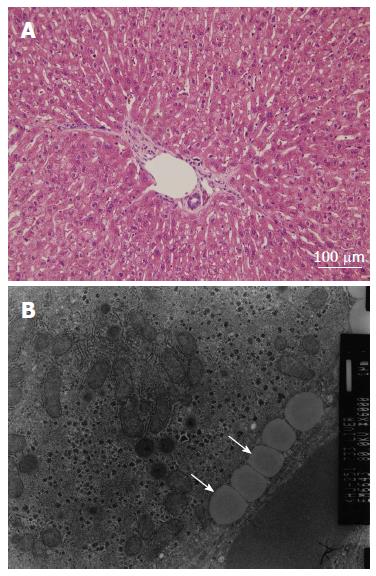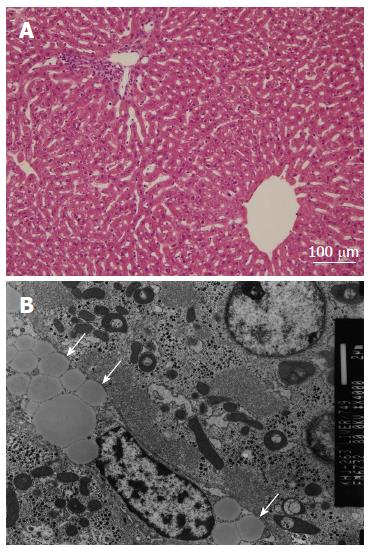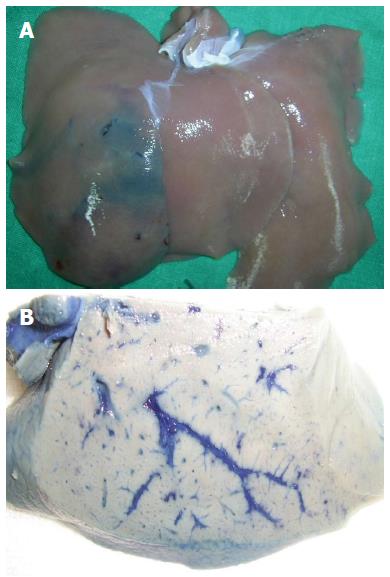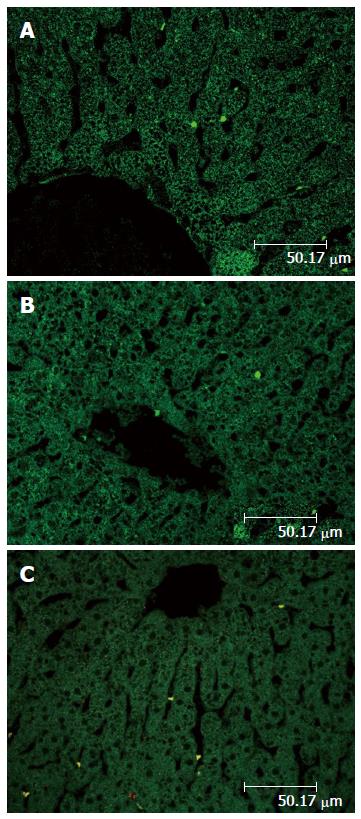Copyright
©2014 Baishideng Publishing Group Inc.
World J Gastroenterol. Oct 21, 2014; 20(39): 14442-14449
Published online Oct 21, 2014. doi: 10.3748/wjg.v20.i39.14442
Published online Oct 21, 2014. doi: 10.3748/wjg.v20.i39.14442
Figure 2 Histologic findings in the portal area from a rabbit in group 1.
A: Light microscopic finding shows no specific abnormality in the hepatocytes and sinusoids (H and E, × 200); B: Electron microscopic finding shows multiple fat vacuoles (arrows) within the vascular lumen. However, there is no evidence of interstitial edema. The integrity of the endothelium is well preserved.
Figure 3 Histologic findings in the portal and central area from a rabbit in group 2.
A: Light microscopic finding shows no specific abnormality in the hepatic artery, hepatocytes, sinusoids or central hepatic veins (HE, × 200); B: Electron microscopic finding shows multiple fat vacuoles (arrows) within the vascular lumen. However, there is no evidence of interstitial edema. The integrity of the endothelium is well preserved.
Figure 1 Gross findings of the hepatic surface from a rabbit in group 1 after Evans blue staining.
A: Anterior surface of the right lobe shows blue staining; B: Cut surface of the liver shows blue-stained hepatic vessels.
Figure 4 Confocal microscopic images of the central area of rabbit liver with transferase-mediated dUTP nick-end labeling staining.
A: Representative group 1 liver specimen shows no evidence of hepatocyte apoptosis. The two small dots with green staining represent apoptotic blood cells within the sinusoid (× 400); B: Representative group 2 liver specimen shows no evidence of apoptosis in the hepatocytes; C: Representative group 3 liver specimen reveals no evidence of hepatocyte apoptosis. The highly fluorescent signals that highlight intensely stained scattered diffuse nuclei are white blood cells within the sinusoids (× 400).
- Citation: Kim YW, Park YM, Yoon S, Kim HJ, Park DY, Cho BM, Choi SH. Effect of intra-arterial infusion with triolein emulsion on rabbit liver. World J Gastroenterol 2014; 20(39): 14442-14449
- URL: https://www.wjgnet.com/1007-9327/full/v20/i39/14442.htm
- DOI: https://dx.doi.org/10.3748/wjg.v20.i39.14442












